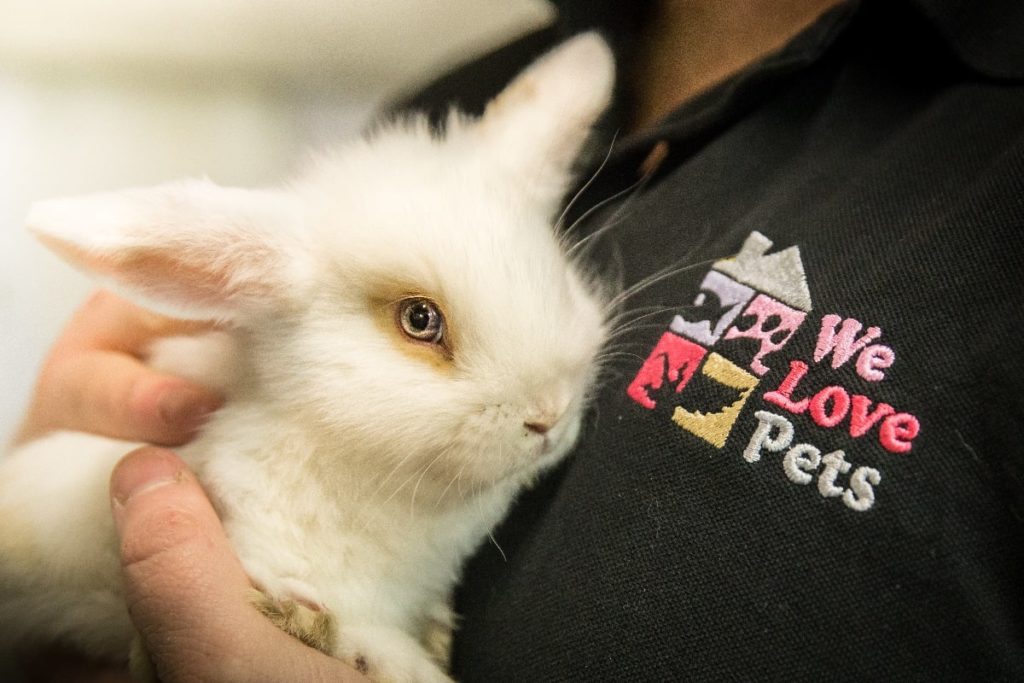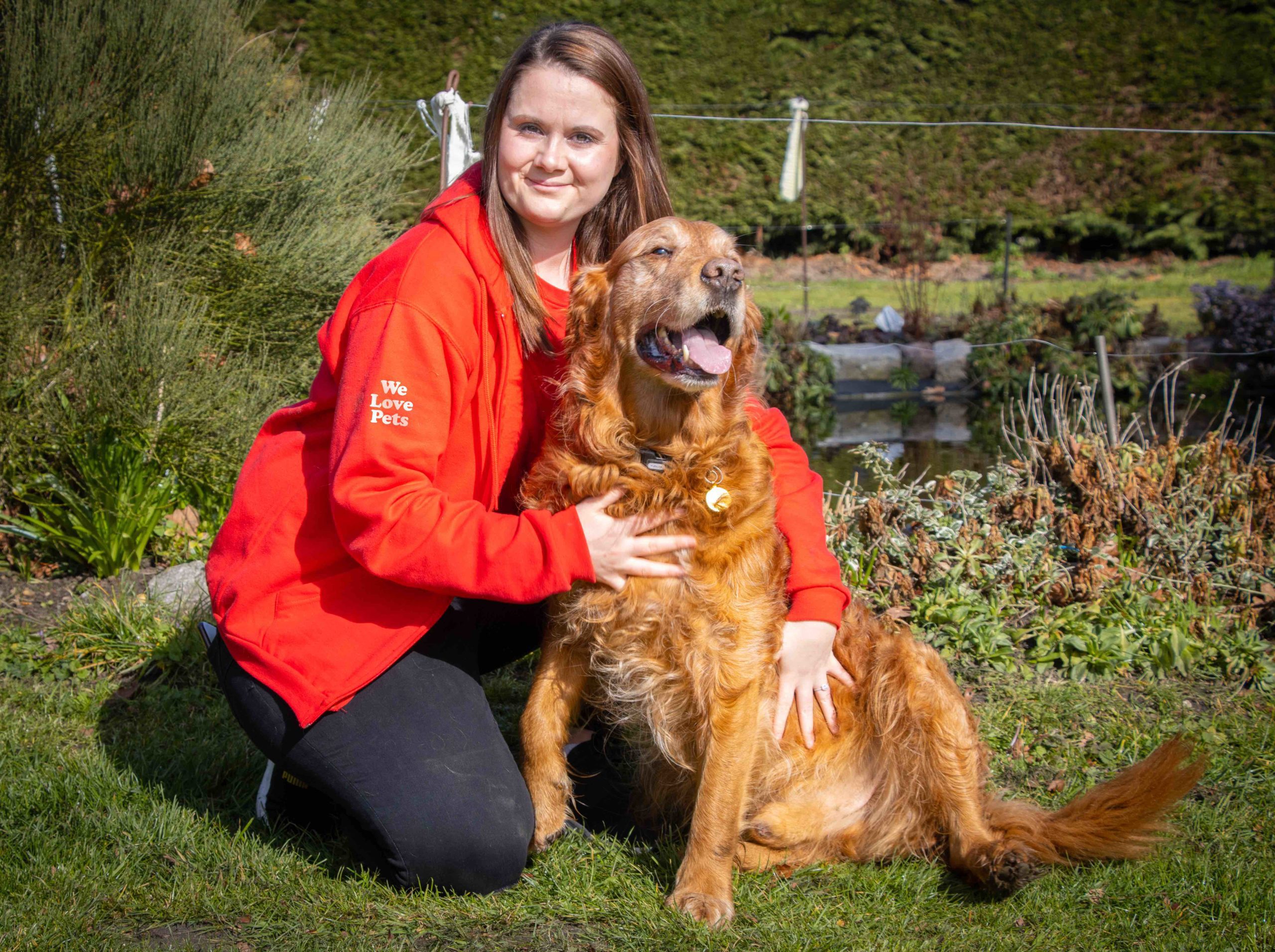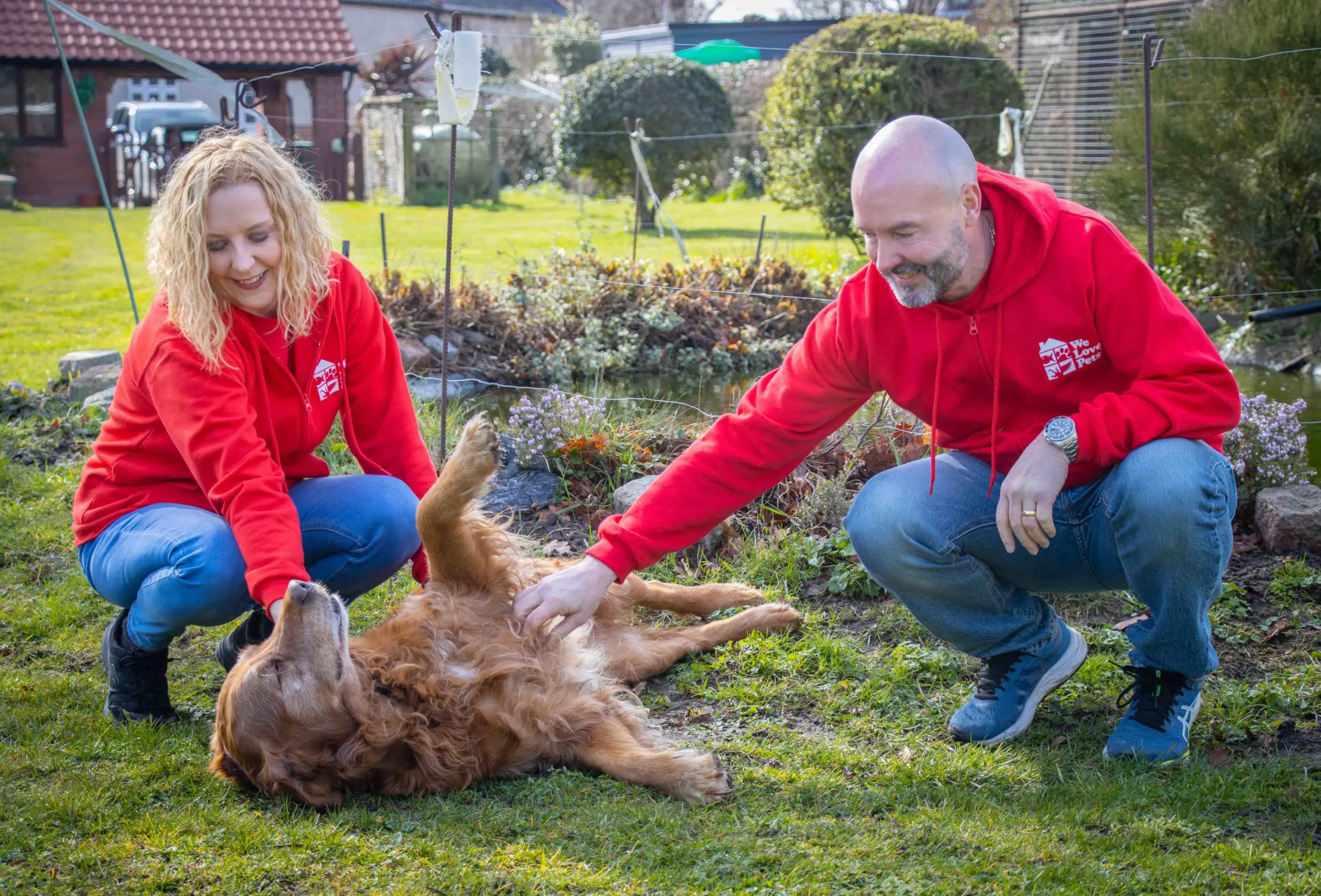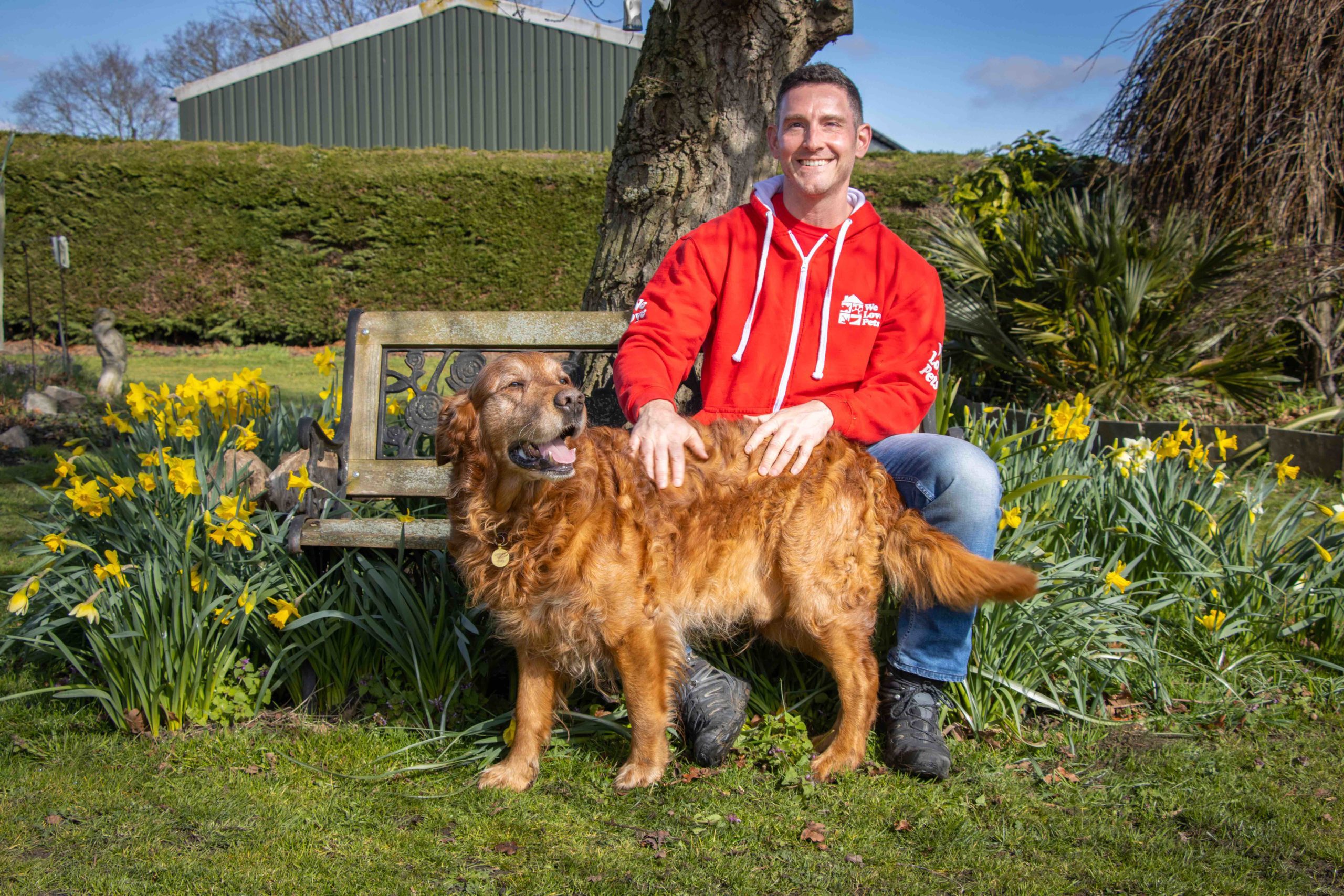Deciding to get a pet rabbit is a really exciting time, but it can also be a bit confusing when it comes to knowing exactly what you will need for your new fluffy companion. We’ll take you through everything from knowing what size of enclosure to get to how much it will cost each month to feed your new rabbit.
Will your new rabbit be indoors or outdoors?
For years many people have successfully kept rabbits outside, however, often this was in very small hutches and rabbits were left most of the day with little or no mental stimulation. We know so much more now about the cognitive ability of our furry companions and this kind of existence for them is not suitable. Housing your rabbit outside is still completely fine, but some considerations need to be made first.
Outdoor rabbits
- Is your garden fox proof? Foxes will potentially try to access a hutch if they can get into your garden. Foxes could seriously injure your rabbit or potentially spread diseases. So, if you think your garden is frequently visited by them perhaps consider housing your rabbit inside.
- Is your garden big enough to house a hutch? Rabbits need a hutch large enough so they can hop 3 times from one side to the other as a minimum. So, for an average adult rabbit it is recommended to have a hutch at least 6 foot long. As well as the main hutch, we recommend that the hutch also has an accessible run for during the day so your rabbit can enjoy time outside and enrichment can be provided to allow your rabbit to behave naturally.
- Is your garden sheltered? Rabbits need shelter from the elements, especially in wintertime so making sure you have an area where your hutch won’t be fully exposed to the elements is essential. One of the best places to have your hutch is up against a shed or wall so the back of the hutch is protected, and then a tarpaulin can be placed over the front of the hutch at night or during spells of bad rain, wind or snow.
- Will my rabbit have the social interaction needed in the garden? Quite often when rabbits are housed in the garden it’s easy for us to forget to spend quality time with them. Rabbits are social animals and do well with interaction with people, so long as young children are not too rough with them. But when housed in the garden it is quite easy to not spend as much time with them compared to if they were housed inside, especially during winter. To mitigate this, it’s a good idea to get into a routine early when you bring your rabbit home of going out to spend time with them as soon as you come in from work or children come in from school. You could also consider rabbit-proofing your home so during the winter months they can be brought inside for some social interaction. It’s really important that they are played with regularly.
- Vaccinations – if your rabbit is living outside in a garden where they can come into contact with wildlife, it’s vital to have them vaccinated against myxomatosis and RHD (Rabbit Haemorrhagic Disease 1+2). They can have these vaccinations from the age of 5 weeks and then regularly throughout their lives.
Indoor rabbits
If you have made the decision to keep your rabbit inside, then the main things to consider are the space required for a cage and rabbit proofing your home. The same rule applies, and the enclosure needs to be big enough for your rabbit to hop 3 times. However, indoor cages don’t need to be as sturdy as outdoor ones. So rather than a wooden hutch, there are some fantastic plastic or metal indoor rabbit cages available.
When it comes to rabbit-proofing your home, the most important area to start with is electrical wires! Rabbits have constantly growing teeth and by nature are chewers. Covering all cables with cable covers is vitally important, and then consider blocking up areas under furniture and near doorways.
What food do rabbits eat?
Once you have decided where to keep your rabbit, the next thing to think about is food and bedding. Rabbits are natural grazers, and anytime outside munching on grass is perfect for them. However, wintertime is not great for them to be out unsheltered for long periods and in spring the grass can be a little rich in sugar, so consider picking a couple of small handfuls of grass a day to give to your rabbit.
There are lots of dry rabbit foods on the market and knowing which one is going to be suitable for your rabbit can be tricky. The thing to avoid is muesli dry foods. These may look nicer than standard pellet foods, however, with muesli feeds rabbits will often feed selectively. This means that they eat all the nice bits and leave the boring ones, which results in them not having a balanced diet and can lead to health issues. Providing your rabbit with a good quality pellet food will make sure they get all the nutrients they need.
You can give your rabbit a small handful of fresh veg or leafy greens daily like kale, broccoli or spinach, or even in summer weeds like dandelion or plantain. Just make sure that any hand-picked weeds are washed thoroughly before feeding to your rabbit. You can feed your rabbit treats of pieces of apple or carrot, but these should only ever be given as treats due to the sugar content.
And then the most important part of your rabbit’s diet is hay! Hay makes up around 80% of your rabbit’s daily diet. It should always be available to them and you should offer a portion around the same size of your rabbit daily in the morning, and if that is all gone by the afternoon, offer another portion. Hay is vital for your rabbit’s digestive health and also helps to keep their teeth healthy. Try to buy a lust free bagged hay as this is safer and usually greener and more sweet smelling than bedding hay – your rabbit will enjoy eating this much more!
Your daily feeding schedule should look like this:
- Morning feed consisting of a portion of fresh hay the same size of your rabbit
- Morning pellet feed of around 1-2 tablespoons depending on the size of your rabbit
- A handful of fresh greens twice a day
For more information on feeding your rabbit, the PDSA have created a great rabbit feeding leaflet which can be found here.
Your rabbit’s bedding
There are many suitable forms of bedding you can use from wood shavings to straw and hay. The important thing to consider is that the rabbit needs to have a dust-free environment to prevent respiratory problems occurring. If your rabbit is housed outside with plenty of ventilation using straw and hay will be absolutely fine. But if your rabbit is housed inside, it would be better to use a dust-free wood saving substrate with a small hay or straw area for bedding. This will ensure they maintain a health respiratory tract. Old towels and clothing can also be a nice change for your rabbits bedding, but check regularly for any holes or frayed areas that your rabbit could get caught in.
Enriching your rabbit’s mental health
Lastly, we need to consider how to keep your rabbit mentally active while you are out. Enrichment is vital for your furry friend and keeps them active and thinking and prevents boredom. This can be provided in many ways, here are some ideas:
- Digging trays – trays that can be filled with soil or sand and treats hidden inside. Rabbits are natural diggers so this will encourage them to display that behaviour.
- Treat balls – instead of feeding your rabbit his pellets in a bow, place them in a treat ball that they need to roll around to access. This will help keep them mental and physically active.
- Mineral blocks – as well as providing essential nutrients these will also help maintain your rabbit’s dental health.
- Grass trays – great for indoor housed rabbits. These can be grown quickly at home and placed in with your rabbit for them to graze on.
- Tunnels – rabbits naturally live underground in tunnels and burrows in the wild so providing them with safe, hard wearing plastic tunnels allows them to feel safe and secure and display some of their natural behaviours.
The cost of keeping a rabbit
As with any pet, you should always consider the cost of keeping them longer term as well as the initial set up costs. This should include thinking about vet care as well as the basics around housing and feeding.
The average costs for a good quality hutch or indoor cage is anywhere from £150, remembering good quality will last longer and be better for your rabbits health.
Feeding a rabbit could cost on average £10 – £20 per month depending on the size of your rabbit. Bedding costs could be around £5 – £10 per month.
The cost of vaccinations does vary so speak to your local vet to get an idea. Some vet practices will offer affordable packages where you pay a set amount a month which can make things easier and more predictable financially.




